From California Institute of Technology (US)
via
15 APRIL 2021
MICHELLE STARR
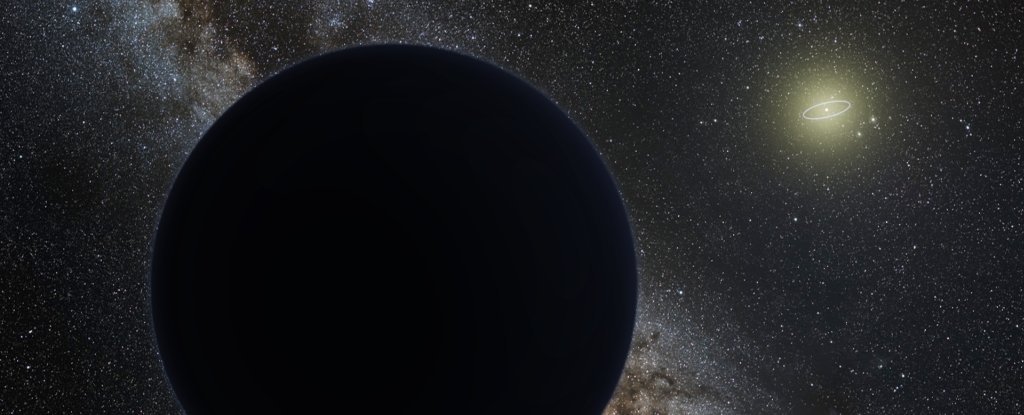
Artist’s impression of Planet Nine. Credit:Tom Ruen/European Southern Observatory (EU)/Wikimedia Commons)
If Planet Nine is out there, a large, mysterious planet lurking at the dark edges of the Solar System, it may not be where we thought it might be.
According to astronomers searching for the hypothetical object, new information taken into account could mean that its orbit is significantly more elliptical than most recently predicted.
The hypothetical Planet Nine made a big entrance in 2016, when astronomers Konstantin Batygin and Michael Brown of Caltech published a paper in The Astronomical Journal. In it, they set out their case for an as-yet undiscovered planet in the outer reaches of the Solar System. The evidence, they said, lay in other objects from far beyond the orbit of Neptune.
These objects are called Extreme Trans-Neptunian Objects (ETNOs). They have huge elliptical orbits, never crossing closer to the Sun than Neptune’s orbit at 30 astronomical units, and swinging out farther than 150 astronomical units.
Batygin and Brown found that these orbits have the same angle at perihelion, the point in their orbit that is closest to the Sun. The astronomers ran a series of simulations, and found that the gravitational influence of a large planet could cluster the orbits in this way.
Since that paper dropped, the theory has become very controversial, with many astronomers finding Planet Nine’s existence unlikely, but so far we have no firm evidence one way or the other. The most conclusive way the debate will be settled is if we find the slippery thing – and a new update from Batygin and Brown could help us try to do that.
Their new paper has been accepted into The Astrophysical Journal Letters.
The initial detection of a possible Planet Nine back in 2016 was made based on just six ETNOs – these objects are, after all, very small, and very hard to detect. Over time, more ETNOs have been discovered – today we know about 19 – which means we now have more data to analyze to calculate the characteristics of the planet.
In 2019, the astronomers revised the available information [Physics Reports] and came to the conclusion that they had gotten a few things slightly incorrect. The mass of the planet, according to the revision, was only five times the mass of Earth, rather than the 10 they had initially calculated, and its eccentricity – how elliptical it is – was lower.
And now they’ve updated those calculations again.
“However,” they wrote in a post on the Find Planet Nine blog, “the question we asked ourselves during the height of the pandemic is a different one: are essential physics missing from our simulations? Through our continued and incessant probing of the model, we have discovered that the answer to this question is ‘yes’.”
Their simulations, they said, assumed that any object that moves beyond 10,000 astronomical units from the Sun is lost to space. What they weren’t taking into account was that the Sun wasn’t born in isolation, but probably in a large, heavily populated star-forming cloud with other baby stars.
Under these conditions, the baby Solar System would have almost definitely formed an inner section of the Oort Cloud, the shell of icy bodies surrounding the Solar System between about 2,000 and 100,000 astronomical units from the Sun.

The formation of giant planets such as Saturn and Jupiter would have flung debris outwards towards interstellar space; but the gravitational perturbations of passing stars would have pushed them back into the Sun’s gravitational influence, so that they end up forming the inner Oort Cloud.
We tend to think of the Oort Cloud as just sort of hanging about, not doing much of anything, really, but when Batygin and Brown ran a whole bunch of new simulations, taking these physics into account, they found that objects in the inner region of the Oort Cloud may indeed move about a bit.
“Planet Nine, however, alters this picture on a qualitative level,” the researchers said.
“Due to the long-term gravitational pull of Planet Nine’s orbit, inner Oort Cloud objects evolve on billion-year timescales, slowly getting re-injected into the outer solar system. So what happens to them? We have simulated this process, accounting for perturbations from the canonical giant planets, Planet Nine, passing stars, as well as the galactic tide, and have found that these re-injected inner Oort Cloud objects can readily mix in with the census of distant Kuiper belt objects, and even exhibit orbital clustering.”
This means that some of the extreme trans-Neptunian objects we have found could in fact have originated in the Oort Cloud, which is really cool. However, the team’s simulations also showed that the clustering of the Oort Cloud objects would be weaker than that of the objects that came from the Kuiper Belt, closer in.
This suggests that a more eccentric orbit for Planet Nine would better explain the data than the orbit the researchers’ 2019 paper found.
We won’t know exactly how eccentric that orbit might be until more study can be conducted of the clustered objects, to determine which of them originated in the inner Oort Cloud; but, there’s a limit to how eccentric the orbit can become before it is no longer consistent with our observations of the outer Solar System.
Because the hypothetical planet is so far away and so dim, our chances of spotting it are really low, so this information can be used to refine models, and stop us looking for it in places it might not be – hopefully leading to a detection of this elusive beast.
Even if we never find it, though, the discoveries it has led to have been awesome. A whole bunch of new Jovian moons and super-distant potential dwarf planets is nothing to sneeze at.
See the full article here .

five-ways-keep-your-child-safe-school-shootings
Please help promote STEM in your local schools.

The California Institute of Technology (US) is a private research university in Pasadena, California. The university is known for its strength in science and engineering, and is one among a small group of institutes of technology in the United States which is primarily devoted to the instruction of pure and applied sciences.
Caltech was founded as a preparatory and vocational school by Amos G. Throop in 1891 and began attracting influential scientists such as George Ellery Hale, Arthur Amos Noyes, and Robert Andrews Millikan in the early 20th century. The vocational and preparatory schools were disbanded and spun off in 1910 and the college assumed its present name in 1920. In 1934, Caltech was elected to the Association of American Universities, and the antecedents of National Aeronautics and Space Administration (US)’s Jet Propulsion Laboratory, which Caltech continues to manage and operate, were established between 1936 and 1943 under Theodore von Kármán.
Caltech has six academic divisions with strong emphasis on science and engineering. Its 124-acre (50 ha) primary campus is located approximately 11 mi (18 km) northeast of downtown Los Angeles. First-year students are required to live on campus, and 95% of undergraduates remain in the on-campus House System at Caltech. Although Caltech has a strong tradition of practical jokes and pranks, student life is governed by an honor code which allows faculty to assign take-home examinations. The Caltech Beavers compete in 13 intercollegiate sports in the NCAA Division III’s Southern California Intercollegiate Athletic Conference (SCIAC).
As of October 2020, there are 76 Nobel laureates who have been affiliated with Caltech, including 40 alumni and faculty members (41 prizes, with chemist Linus Pauling being the only individual in history to win two unshared prizes). In addition, 4 Fields Medalists and 6 Turing Award winners have been affiliated with Caltech. There are 8 Crafoord Laureates and 56 non-emeritus faculty members (as well as many emeritus faculty members) who have been elected to one of the United States National Academies. Four Chief Scientists of the U.S. Air Force and 71 have won the United States National Medal of Science or Technology. Numerous faculty members are associated with the Howard Hughes Medical Institute(US) as well as National Aeronautics and Space Administration(US). According to a 2015 Pomona College(US) study, Caltech ranked number one in the U.S. for the percentage of its graduates who go on to earn a PhD.
Research
Caltech is classified among “R1: Doctoral Universities – Very High Research Activity”. Caltech was elected to the Association of American Universities in 1934 and remains a research university with “very high” research activity, primarily in STEM fields. The largest federal agencies contributing to research are National Aeronautics and Space Administration(US); National Science Foundation(US); Department of Health and Human Services(US); Department of Defense(US), and Department of Energy(US).
In 2005, Caltech had 739,000 square feet (68,700 m^2) dedicated to research: 330,000 square feet (30,700 m^2) to physical sciences, 163,000 square feet (15,100 m^2) to engineering, and 160,000 square feet (14,900 m^2) to biological sciences.
In addition to managing JPL, Caltech also operates the Caltech Palomar Observatory ;

the Owens Valley Radio Observatory(US);

the Caltech Submillimeter Observatory(US);

the W. M. Keck Observatory at the Mauna Kea Observatory(US);

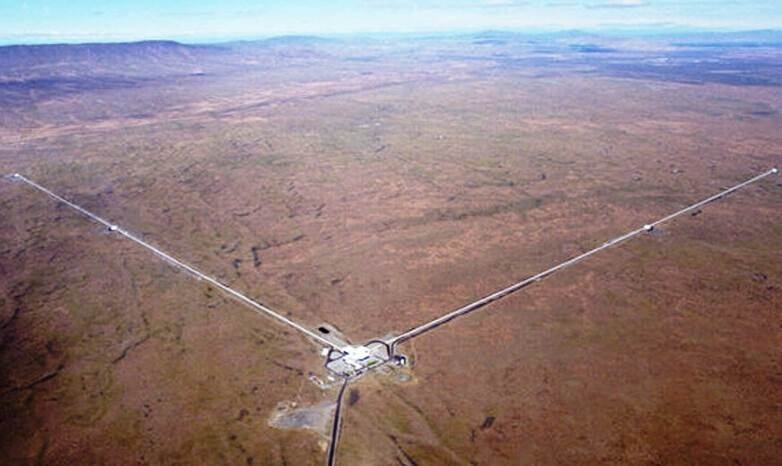
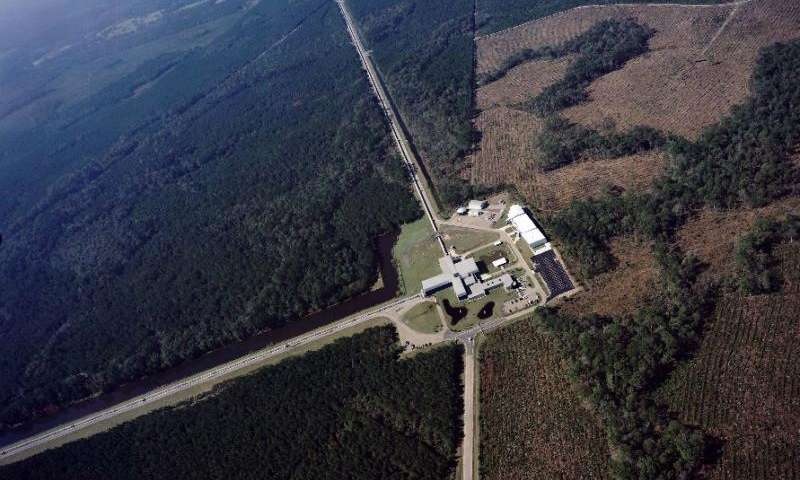

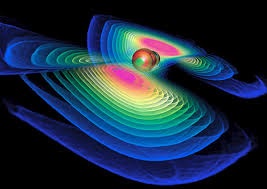
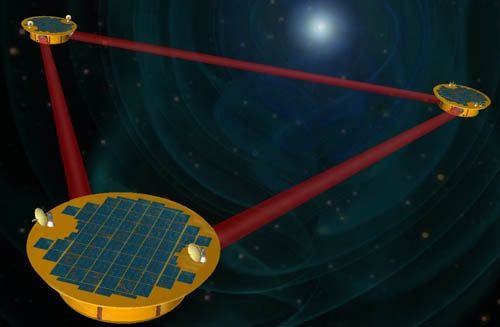
and

The Institute launched the Kavli Nanoscience Institute at Caltech in 2006; the Keck Institute for Space Studies in 2008; and is also the current home for the Einstein Papers Project. The Spitzer Science Center(US), part of the Infrared Processing and Analysis Center(US) located on the Caltech campus, is the data analysis and community support center for NASA’s Spitzer Infrared Space Telescope [no longer in service].
Caltech partnered with University of California at Los Angeles(US) to establish a Joint Center for Translational Medicine (UCLA-Caltech JCTM), which conducts experimental research into clinical applications, including the diagnosis and treatment of diseases such as cancer.
Caltech operates several Total Carbon Column Observing Network(US) stations as part of an international collaborative effort of measuring greenhouse gases globally. One station is on campus.
Caltech partnered with University of California at Los Angeles(US) to establish a Joint Center for Translational Medicine (UCLA-Caltech JCTM), which conducts experimental research into clinical applications, including the diagnosis and treatment of diseases such as cancer.
Caltech operates several Total Carbon Column Observing Network(US) stations as part of an international collaborative effort of measuring greenhouse gases globally. One station is on campus.



